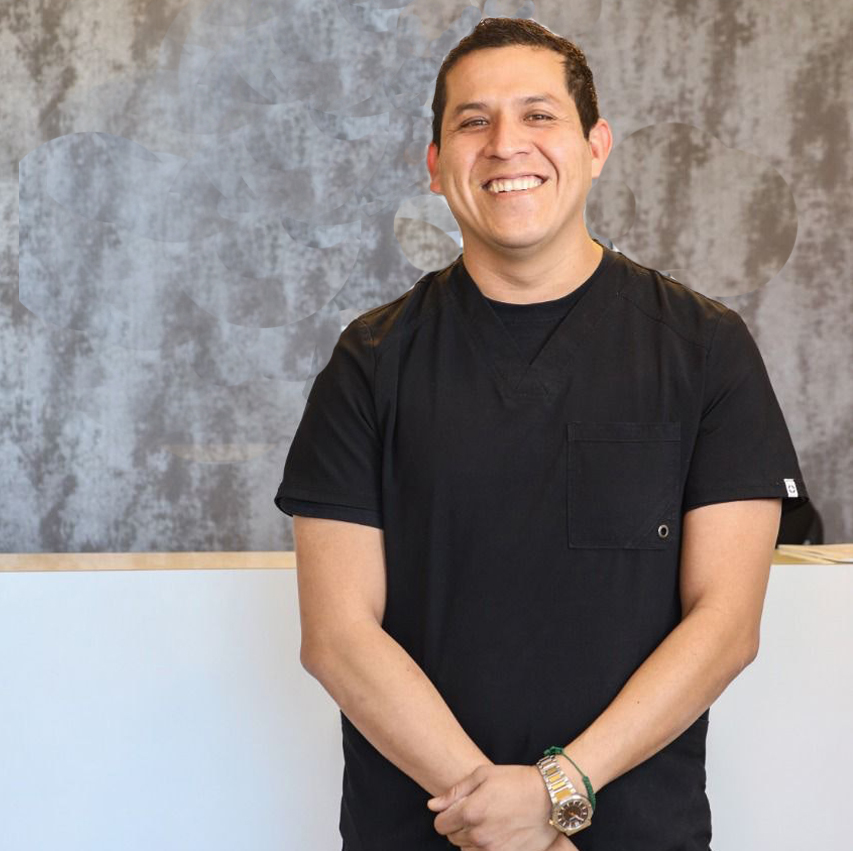Dental Bridge: What You Need to Know


Anna Roth

Dr. Guzin
Medical Reviewer
What is a dental bridge?
A dental bridge, sometimes called a “fixed partial denture,” replaces one or more missing teeth with artificial teeth. The bridge is usually created by placing dental crowns on the natural teeth on either side of the gap (called abutment teeth) and cementing the prosthetic teeth in between, to keep them in place. A bridge can also be cemented to dental implants or bonded to the backs of adjacent natural teeth, with wings made of metal or porcelain.

Pros and Cons of a Dental Bridge?
Pros:
- A dental bridge can restore your ability to speak and chew properly.
- It can improve your smile and help preserve the shape of your face.
- Restoring missing teeth can keep your remaining teeth from drifting out of position and more evenly distribute the force of your bite.
Cons:
- You may experience discomfort or pain during and after the procedure.
- It can get expensive, especially if you have multiple gaps to close.
- Dental bridges aren’t as long-lasting a solution for tooth replacement as dental implants, which are considered permanent. While implants cost more up front, they can last for 15, 20, even 25 years or more. This means implants could end up costing about the same as a bridge that may need to be replaced.

Dental Bridge Cost
Average Cost: $2,500
Range: $1,500 – $16,000
The type of bridge is the biggest factor in determining cost. However, there are other factors. Dental bridges are covered by many dental insurance plans. Check with your insurance company before booking the procedure.
The cost of a dental bridge varies significantly based on whether or not the work is done at home or abroad. High quality dental work done through HebeDoc’s dental network in Mexico and Turkey is comparable to work done in the US and Canada, with one difference — the cost savings are huge.
The number of pontics, or artificial teeth, required to bridge the gap plays a pivotal role in determining the overall cost. Generally, the more pontics required (ranging from one to four teeth), the higher the expense.
Dental bridges come in various types, each with its own price tag:
- Traditional or Cantilever Bridges: $2,000 – $5,000 for one pontic and a crown for each abutment tooth is typical in the US. Through one of HebeDoc’s approved dentists in Mexico, a traditional bridge costs between $405- $1,650.
- Maryland Bridges: Costing $1,500 to $2,500 in the US, for one pontic with framework attached to tooth abutment only cost $300- $420 in Mexico.
Materials used and its framework also impacts cost. Options include:
- Porcelain: Expensive material, visible bridges due to its natural appearance.
- Other Ceramics: Composite resin and zirconia are more budget-friendly.
- Metal and Metal Alloys: The most cost-effective but least natural-looking option.
Complex bridge procedures in hard-to-reach areas will likely increase costs. For example, an implant-supported bridge typically incurs higher expenses compared to a crown-supported bridge.
The state of your oral health matters. If the abutment teeth are decayed or significantly damaged, they may require fillings, root canals, or reconstruction, adding to the overall expense.
The level of expertise and certification of your dental provider can influence the cost. Prosthodontists, specialists in tooth replacement, often charge more due to their extensive training and experience.
Consultations, dental X-rays, anesthesia, pain medication, and follow-up exams contribute to the overall cost.
Dental Insurance
Most dental insurance plans provide some coverage for dental bridges, but the extent varies based on your specific plan. Factors like copays, deductibles, and the chosen treatment type can affect your out-of-pocket expenses. It’s essential to review your insurance policy to understand the coverage.
It’s worth noting that Medicare typically does not cover dental bridges, and Medicaid may not provide dental care coverage for adults. To manage costs, inquire about discount plans, monthly payment options, or financing choices which can make dental bridge expenses more manageable.
Dental bridges are not the only solution for tooth replacement. Dental implants, dentures, or partial dentures also serve this purpose. While dental bridges have a lower initial cost, they may prove more expensive over a lifetime. Dental bridges typically require replacement every 5-15 years, depending on material and maintenance.
Deciding whether a dental bridge is worth the investment goes beyond its cosmetic benefits. It can significantly impact your oral health and prevent costly issues down the road.
Different types of dental bridges?
A dentist or prosthodontist (who specializes in the replacement of missing teeth) may recommend one of these types of bridges, depending on the location of your missing teeth and whether the adjacent teeth are structurally sound.
Traditional dental bridges
Implant-supported bridges
Maryland bridges
Cantilever bridges
“Tip: Whitening treatments won't affect the color of the false teeth in your bridge. Getting teeth whitening before your bridge is created will help ensure the best long-term color match.”

Dental bridge procedure
Getting a bridge usually takes two dental visits, each about an hour long.
During your first visit, your dentist will start by injecting a local anesthetic and applying topical anesthetic to keep you comfortable as they prepare the abutment teeth. The quick pinch of the injection should be the most uncomfortable part of your procedure.
Typically, they’ll need to remove enough enamel on the abutment teeth to allow room for a crown, a process called recontouring. You’ll feel pressure from the grinding, but it shouldn’t be painful.
Then they’ll take impressions (a rubber mold) of these teeth and the gap between them. These impressions will be sent to a dental laboratory that will make your permanent bridge. In the meantime, you’ll be given a temporary bridge, to protect the prepared teeth and gums.
At your next visit, your dentist may temporarily cement your new fixed bridge in place. You’ll wear it like this for a few weeks, until you’ve mutually determined that the fit works. Your dentist can make minor adjustments, such as contouring the pontics to improve your bite and ensure a comfortable fit. Then the bridge will be fully cemented into place.
Difference from implant-supported bridge
Getting an implant-supported bridge takes several months. You’ll start with dental implant surgery, to create the foundation for your prosthetic abutment teeth. You’ll be given a local anesthetic, and an oral surgeon will place one or more screws made of titanium or zirconia into your jawbone, creating artificial roots.
It takes six months for the implant to fuse to the jawbone (a process called osseointegration), so the dentist will cover it with a healing cap.
Once the screws have fully bonded to the bone, your provider will place abutments (tiny connectors) to attach the implants to dental crowns (which look and function like natural teeth), with the implant-supported bridge spanning the gap in between.
Recovery
Recovery from a traditional dental bridge procedure is relatively easy. Your mouth and tongue will feel numb until the local anesthetic has worn off, and you’ll have some soreness and increased sensitivity to heat and cold, but you’ll be able to resume your normal activities right away. Contact your dentist immediately if those symptoms last beyond a few weeks or you have any bleeding, pain, or fever.
Your recovery will be more involved if you need dental implant surgery to secure your bridge, but you still won’t need to take time off work to heal. Expect some swelling and tenderness, which should be manageable with over-the-counter pain medications. You can keep your mouth clean and relieve the swelling by using saline (salt water) rinses and sticking to a soft or liquid diet for at least two weeks.

How long do dental bridges last?
Most dental bridges don’t last a lifetime. According to the Cleveland Clinic, they can last between 5 and 10 years, “with good oral hygiene and regular professional cleaning.”
Their longevity also depends on the type of bridge you get. Implant-supported bridges tend to be the strongest, with the most longevity. Looking for a more permanent solution to replace missing teeth? Consider dental implants.
Caring for a dental bridge?
Practicing good oral hygiene will extend your bridge’s longevity and help prevent stains.
Your dentist or hygienist can advise you on the best brushing and flossing techniques, but the keystone habits include brushing after each meal and flossing daily, both under the bridge and between the surrounding teeth. Avoid toothpastes that have abrasive ingredients like baking soda, which can damage the glaze on porcelain implants or porcelain-coated pontics.
Pay special attention to the sides of the teeth next to the bridge—and keep in mind that food can get trapped under the pontics, leading to gum disease and tooth decay. Regular dental checkups and professional cleanings will help ensure that you’re keeping the area clean and reduce staining.
Teeth whitening products don’t work on the materials that comprise a bridge or surrounding implants. Your best bet for dealing with stains is prevention with thorough cleaning, especially after you’ve had dark foods and drinks like red wine and coffee.
Potential complications
Dental bridge complications are rare, but can include:
- An allergic reaction to the local anesthetic, bridge materials (especially the metal), or cement.
- Increased temperature sensitivity, soreness, or infection of the crowned teeth
- Chipping of the pontics, crowns, or implants
- Loss of the bridge
If you develop a fever or pain, reach out to your dentist right away; these could be signs of a serious infection.
Avoid chewing sticky or hard foods (including nuts and popcorn kernels) with your bridge, since they can loosen or chip false teeth. Your dentist will be able to repair small chips in a bridge with dental bonding, a procedure that applies a durable resin to fill in the chip. Larger chips or cracks will have to be repaired in a dental lab.
Removal and recemented
Yes, in some cases a fixed bridge will need to be removed and recemented. Most doctors on HebeDoc recommend removing a dental bridge only if medically necessary.
Medicaid coverage
States are required by law to provide Medicaid dental benefits for kids in low-income households, but there’s no requirement that they provide any kind of dental care coverage for adults. According to Medicaid.gov, “While most states provide at least emergency dental services for adults, less than half of the states currently provide comprehensive dental care.” Check with your state’s Medicaid program to see if it offers dental care and what it may cover.
As for Medicare, Parts A and B don’t include dental coverage either. Some Medicare Advantage plans (Part C) include coverage for routine dental care, but those won’t cover a dental bridge. Supplemental insurance is your best bet for coverage of more involved procedures, like a dental bridge.

Dr. Guzin
Ankara Turkey
Dr. Guzin Kırsaçlıoğlu graduated from Ankara Dental School in 1982 and opened her own practice. Dr.Kirsaçlioglu completed her Master’s in Cosmetic Dentistry at New York University in 2011 as well as annual continuing education courses on dental implants in France, Germany, Spain, and Israel. Today, Dr. Kirsaçlioglu is an internationally recognized, multidisciplinary dental professional running a dental practice with a staff of 18.
She is a member of the American Dental Association (ADA), the Turkish Dental Association (TDB), European Academy of Esthetic Dentistry (EAED), American Academy of Cosmetic Dentistry (AAD) and the European Association for Osseointegration (EAO).
She has authored numerous dental related articles covering the topics of both dental implants and dental aesthetics. When not treating patients, Dr Kirsaçlioglu volunteers in rural villages, teaching children about good oral health and preventative dental care.
Who Gets Dental Work Done through HebeDoc?
Patients in need of veneers, dentures, implants, root canals, tooth extraction, crowns,
choose HebeDoc to locate top ranking dentists abroad.
Your Teeth and HebeDoc
HebeDoc will assist you in finding the right – thoroughly vetted — dentists,
While you save you up to 75%!
The Right Dental Specialist at a Fraction of the Cost. HebeDoc works with only the top 5% of dentists, thoroughly vetted with quality and affordability in mind.
100% free, non-binding assessment.
Get Quote
The Dental Professionals

Dr. Corrales
-
Los Algodones, Mexico
(Yuma Arizona Border)
-
Tijuana, Mexico
(San Diego Border)
- Experience: 13+ years
- Language: English, Spanish

- Ankara, Turkey
- Experience: 31+ years
- Language: English,Turkish

- Los Algodones, México (Yuma Arizona)
- Experience: 20+ years
- Language: English, Spanish

- Cancun, Mexico
- Experience: 36+ years
- Language: English, Spanish

- Ankara, Turkey
- Experience: 6+ years
- Language: English,Turkish

- Los Algodones, Mexico (Yuma Arizona Border)
- Experience: 11+ years
- Language: English, Spanish

- Ankara, Turkey
- Experience: 7+ years
- Language: English,Turkish

- Los Algodones, Mexico (Yuma Arizona Border)
- 4.9 (15 reviews)
- Experience: 15+ years
- Language: English, Spanish

- Ankara, Turkey
- Experience: 10+ years
- Language: English,Turkish
